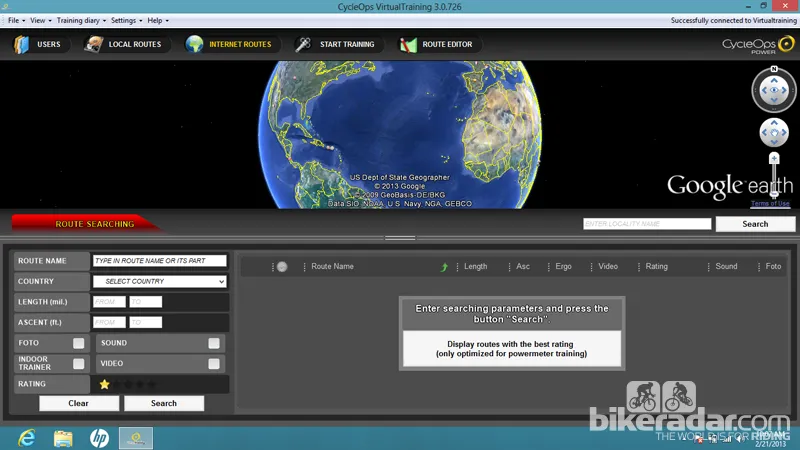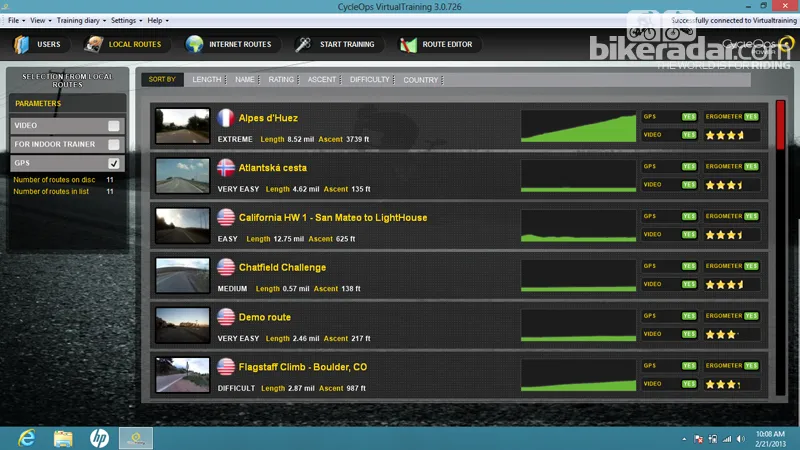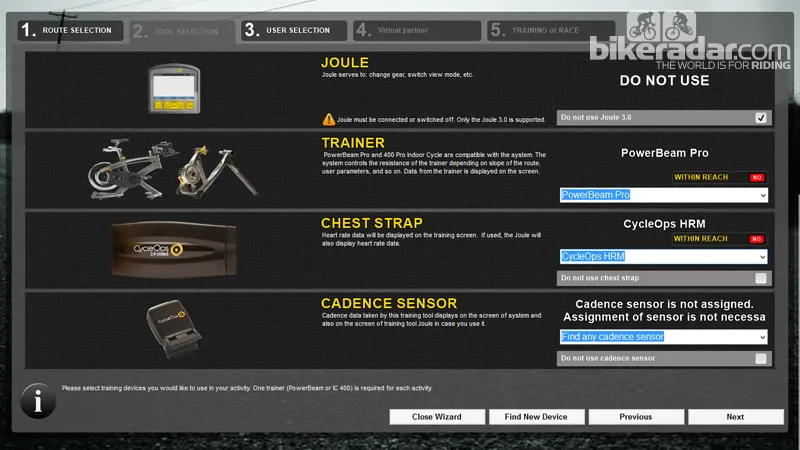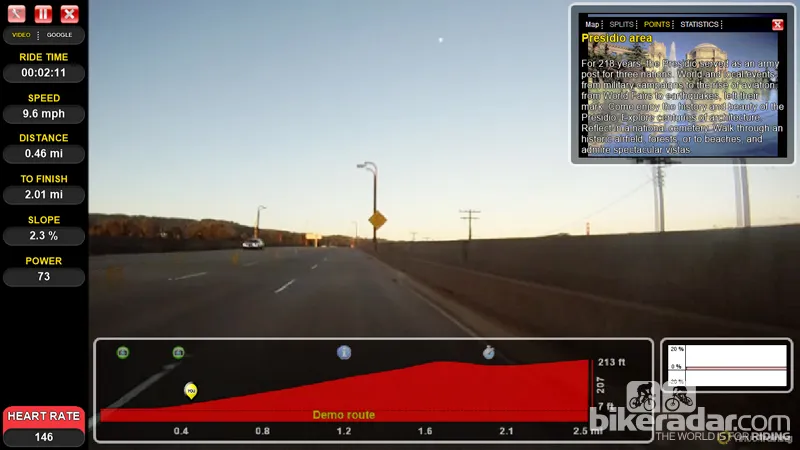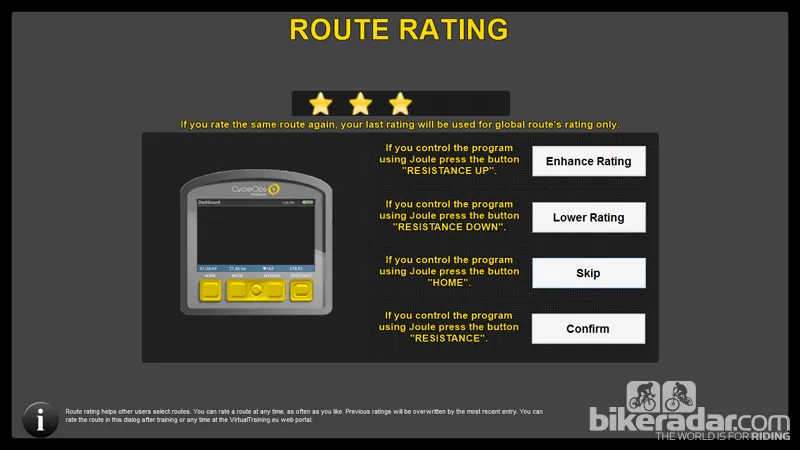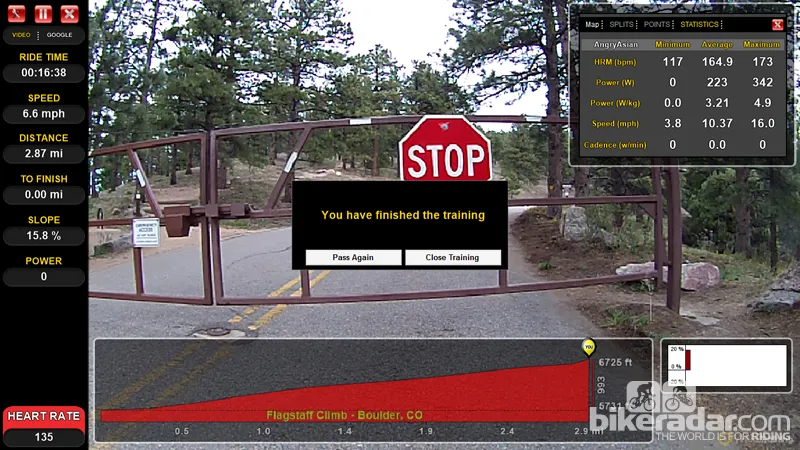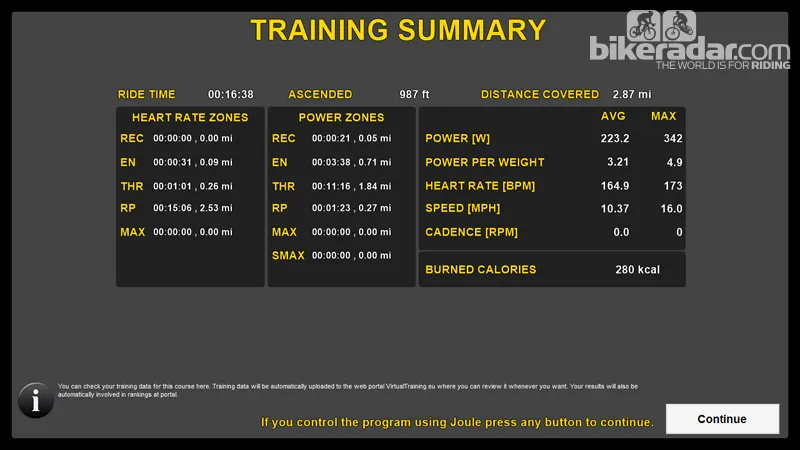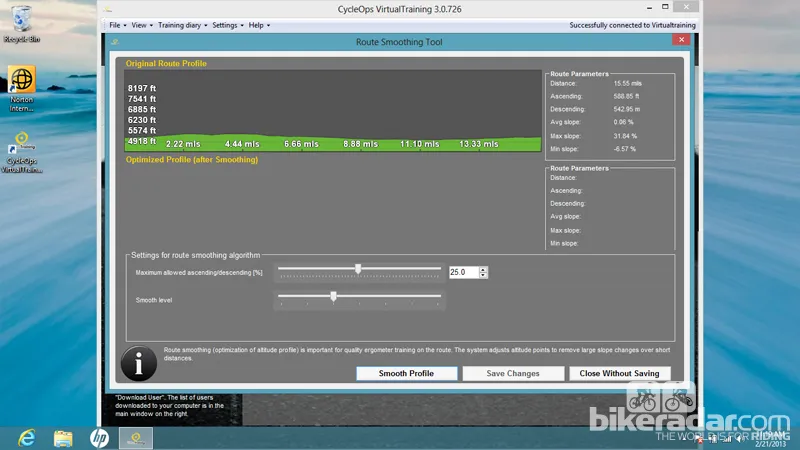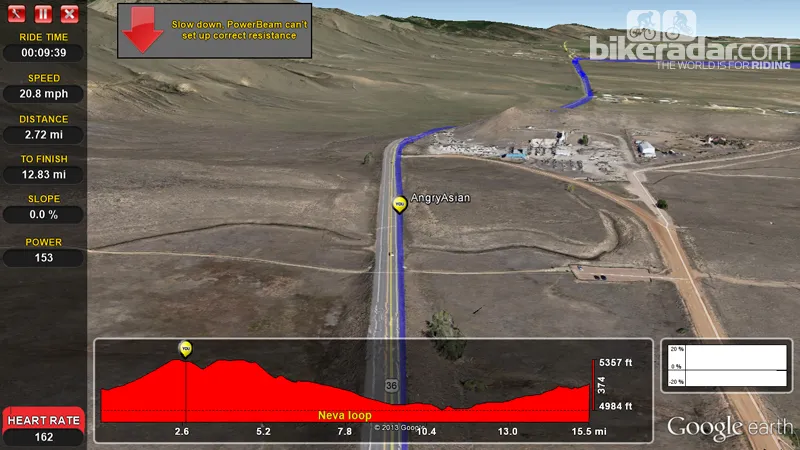CycleOps' PowerBeam Pro indoor trainer is a feature-packed piece of kit on its own. Ultimately, though, it's still just a really good way to pedal mindlessly to nowhere. The company's new VirtualTraining system now relieves much of the boredom and adds some very clever Google Earth and video integration for a virtual reality-type setup that's actually (almost) fun to ride.
As before, resistance on the PowerBeam Pro is electronically controlled, only in this case it's linked to GPS data that's displayed on your Windows-compatible PC. Users can download routes that others have created and posted, from CycleOps' online database. Alternatively, you can create your own routes using Google Maps – and then follow your progress with an overhead view via Google Earth – or just go with a manual workout.
The full experience comes with GPS-enabled routes that also have on-bike video associated with them. Much like other similar systems we've used in the past, VirtualTraining at least gives the suggestion that you're actually riding your bike outdoors.
While the video scrolling is a little jerky and the image quality rather average in many cases, it's a reasonable approximation for the real thing, all things considered. As long as we took the time to calibrate the rolling resistance of our particular tire, displayed power outputs seemed to correlate pretty well with directly measured numbers out of a PowerTap hub.
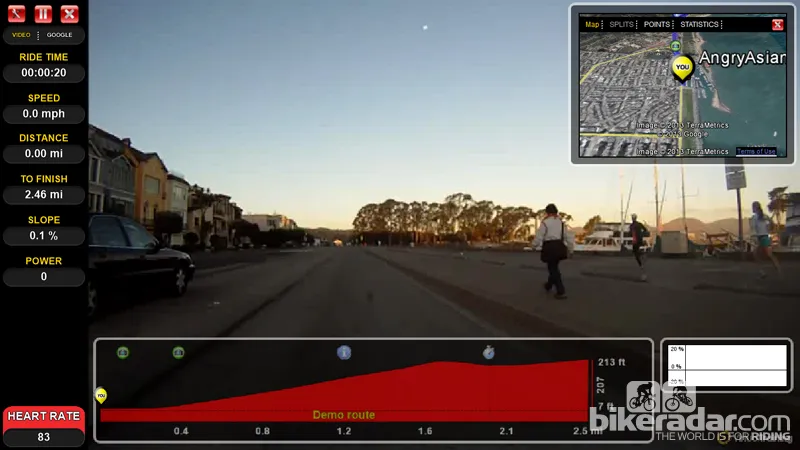
It isn't like riding outdoors but it's not bad, either
Adding to the reality is the fact that you can upload your own video and GPS data from a real ride, lending not only familiar roads but familiar scenery, too.
On-screen, you have your choice of several displays, all of which include a band of data on the left-hand side (ride time, speed, distance, distance to finish, slope, power, and cadence) plus an elevation profile and upcoming grade changes on the bottom edge. The main screen displays your real-life video or your location on a Google map, with the latter's perspective being adjustable for angle and distance.
Optionally, a picture-in-picture display puts a smaller screen top-right, with either a video or map view – whichever you're not using on the main screen. Interestingly, CycleOps has even tossed in a bit of sightseeing trivia. Want to know a little more about Alcatraz? Ride past it and you will.
Uploading routes is straightforward (although slow if video is involved) on CycleOps' impressively polished system, with an easy-to-follow user interface and a generally smooth and intuitive operation that's mostly free of major bugs and glitches. Device options include Garmin, Polar, and CycleOps GPS computers as well as straight KML or GPX files.
Initial setup does take a few minutes, but other than that it's a hassle-free exercise with logical steps. It's worth noting that CycleOps doesn't include a printed manual with this thing – but, then again, we never needed one.
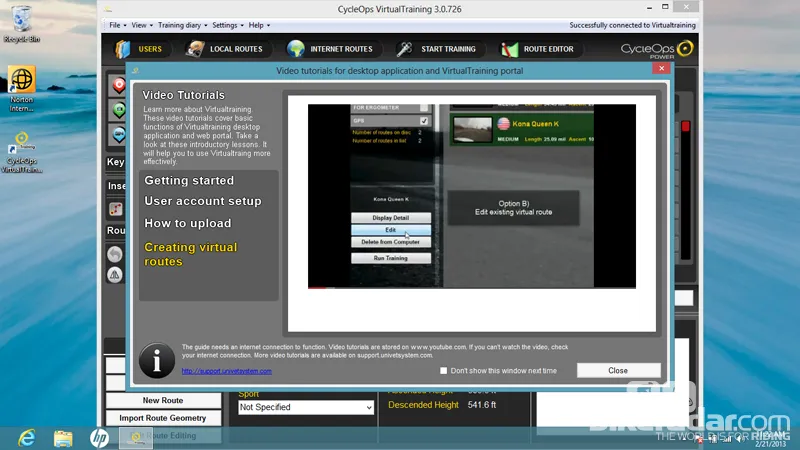
On-screen video tutorials are available to guide you through certain steps
Note that we did say "mostly" free of bugs and glitches, though. Our system occasionally pleaded with us to slow down as it struggled to produce a realistic output when we pedaled hard through downhill sections. And on more than one occasion the Google Earth view would spontaneously revert to a point of view as though we were suddenly transported to a trailing hot air balloon.
We didn't find the VirtualTraining system to be a great tool for scouting unknown routes, either – if you're looking to give yourself a preview of an upcoming out-of-town event, say. Elevation changes are based on rough GPS data, not actual road grades, so it isn't always an especially accurate representation, especially for abrupt features like switchbacks.
Likewise, actual elevation data that's uploaded from a device (which should be more accurate) is dependent on the level of data 'smoothing' you've assigned during the upload process – and with no guidelines it's a hit-or-miss process.
For example, we know for a fact that our local Flagstaff Mountain climb levels off significantly after the first pitch, but the VirtualTraining system seemed to think we were on a much steeper grade through the mid-section. You'll also want to make sure you've got that keyboard accessible during your training session (and, ideally, that you've got the display mirrored on a big-screen TV).
The system can be controlled in the saddle via CycleOps' Joule 3.0 computer head but, curiously, that model is no longer in production and CycleOps doesn't seem to have updated the software to reflect that fact. The company does offer a bundle that includes the newer Joule GPS computer (a review of which is upcoming on BikeRadar) but it won't control the trainer.

If you don't have video available, you can follow yourself with a bird's-eye view
Glitches aside (and, annoyingly, none of these types of trainers seem perfect), the CycleOps VirtualTraining system still succeeds at its core goal. We'd be the first to admit that we don't enjoy training indoors but on our very first session we actually did not just one but two separate 'rides', back to back. It's still not as good as the real thing but this is a reasonable substitute if you have no other option.
One major downside is the price. Buyers looking for a complete system can get one for US$1,299 with the PowerBeam Pro trainer included (it's a separate £1,000 in the UK), or US$1,599/£1,250 with a CycleOps Joule GPS computer on top of that – reasonable figures given competition with similar features, particularly considering the VirtualTraining system's more polished software.
It can also be added to older PowerBeam units but the standalone price is a rather hefty US$349.99/£290, and CycleOps doesn't yet offer a Mac-compatible version.





